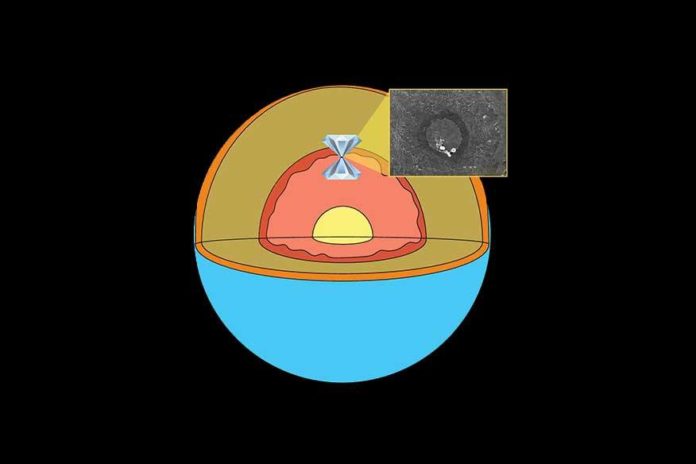This magnetic field is formed deep inside the earth in a fluid outer core of iron and other elements that create electric currents. The core is encompassed by an about 3,000 km thick mantle, made of strong shake, which streams gradually (mm every year).
The mantle produces convection currents, which are strongly linked to the movement of the tectonic plates but also affect the core by varying the amount of heat that is transferred across the core-mantle boundary.
The Earth’s magnetic field occasionally flips its polarity, and the average length of time between such flips has changed dramatically through Earth’s history.
Now, A team of scientists led by Yale has a new factor that may help gain detailed insights on the ebb and flow of Earth’s magnetic field. Scientists discovered that molten iron alloys containing silicon and oxygen form two distinct liquids under conditions similar to those in the Earth’s core. It is a process called immiscibility.
Yale graduate student Sarah Arveson, the study’s lead author, said, “We observe liquid immiscibility often in everyday life, like when oil and vinegar separate in salad dressing. It is surprising that liquid phase separation can occur when atoms are being forced very close together under the immense pressures of Earth’s core.”
Immiscibility in complex molten composites is regular at atmospheric pressure and has been well documented by metallurgists and materials scientists. Be that as it may, investigations of immiscible alloys at higher weights have been restricted to pressures found in Earth’s upper mantle, situated between Earth’s crust and its core.
Various studies have suggested that the slow liquid layer, including the idea that immiscible iron alloys form layers in the core. However, there has been no experimental or theoretical evidence to prove it until now.
In this study, scientists used laser-heated, diamond-anvil cell experiments to generate high pressures, combined with computer simulations. They found two distinct, molten liquid layers: an oxygen-poor, iron-silicon liquid, and an iron-silicon-oxygen liquid. Because the iron-silicon-oxygen layer is less dense, it rises to the top, forming an oxygen-rich layer of liquid.
Yale associate professor Kanani K.M. Lee said, “Our study presents the first observation of immiscible molten metal alloys at such extreme conditions, hinting that immiscibility in metallic melts may be prevalent at high pressures.”
Scientists noted, “The findings add a new variable for understanding conditions of the early Earth, as well as how scientists interpret changes in Earth’s magnetic field throughout history.”
Additional authors of the study are Jie Deng of Yale and Bijaya Karki of Louisiana State University. The National Science Foundation and the Connecticut Space Grant Consortium funded the research.
